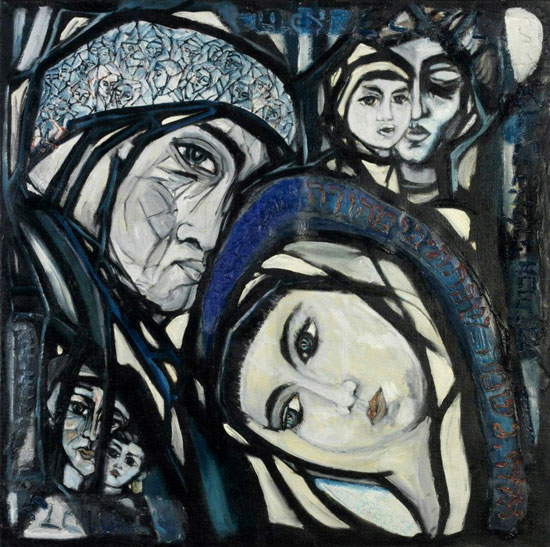Today, January 27, is Memorial Day, and we could not fail to remember through art this indelible day in international history. Because remembering means not to repeat the same mistakes, the same atrocities committed against innocent people, guilty of belonging to a certain race or representing certain differences in thought and life.
It is important to remember and not to forget events that destroyed the lives and dreams of entire families, including children, whose innocence could be read in those sad, dull eyes, with no more hope of survival.
Today is celebrated as the day of hope for a return to life, despite the knowledge that what the survivors experienced and suffered in the concentration camps will forever remain etched in their minds and lives. On January 27, 1945, the Red Army knocked down the gates of the Auschwitz concentration camp and freed the survivors from Nazi extermination. On July 20, 2000, Holocaust Memorial Day was established and January 27 was introduced as a symbolic date in remembrance of the victims of the Holocaust. Since 2000, therefore, on this date, initiatives and meetings have been organized throughout Italy to return to reflection on these terrible events, so that we may never forget.
Dedicated to the Shoah are many works, often created by people who personally suffered it.
Such is the case with this work, Transport (Transport) by Roman Halter.
 |
| Roman Halter, Transport; 1974-1977; London, Imperial War Museum. |
Born in 1927 in Chodecz, Poland, he was the youngest of seven siblings. From 1940 to 1945 he is interned in the Auschwitz-Birkenau and Stuffhof concentration camps. His entire family is killed and of his 800 fellow Jews, only four survive. In 1974 Roman began to recall through writing and painting the experience of the Holocaust, a promise made to his grandfather, who died in the Lodz ghetto. Some of his paintings on canvas and glass are exhibited at the Imperial War Museum, others in British churches and synagogues, while in 2007 his autobiography, Roman’s Journey, was published. The faces of people being transported to their deaths in cattle wagons would always remain in his mind and he would depict them in his paintings, as we see in Transport, a work made between 1974 and 1977 and housed in the Imperial War Museum in London.
Depicted here are Jews being transported to the death camps in cattle cars, piled on top of each other, in very poor, inhumane conditions, without water or food for days. Little more room is attempted to be made for mothers with their babies in their arms, such as the one noticeable in the second foreground on the right of the painting. The mother has her eyes closed partly from exhaustion and partly from the sad fate that will befall her and her baby, who is looking around sad and bewildered. In the foreground, a woman with piercing, sweet and very beautiful eyes, almost resembling a Madonna, seeks comfort by tenderly leaning on a man, also with a resigned look.
The cold tones of the painting evoke the sense of resignation, fear, despondency and coldness of the context. A painting that exudes a tangible sadness.
The truth of our past the story of the Holocaust must be told and taught, especially to new generations, in an effort to build a better future of peace and harmony. Roman Halter passed away on January 30, 2012, at the age of 84.
Warning: the translation into English of the original Italian article was created using automatic tools. We undertake to review all articles, but we do not guarantee the total absence of inaccuracies in the translation due to the program. You can find the original by clicking on the ITA button. If you find any mistake,please contact us.